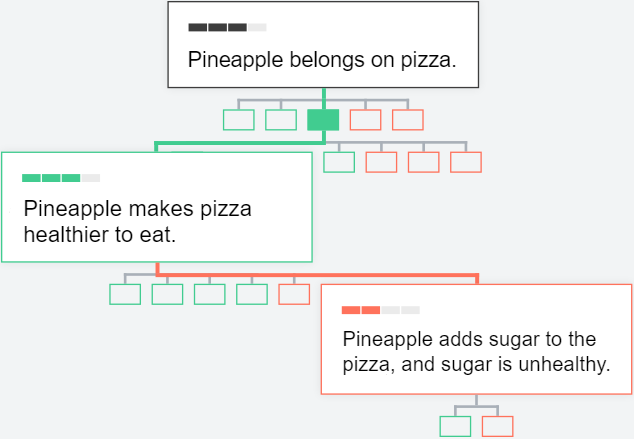Structuring a Discussion
The right structure for a discussion will depend very much on the content and type of discussion you are trying to have. But there are some general considerations that we’ve found are helpful to keep in mind:
Firstly, think about the structure of your discussion early on. Once a couple of hundred claims have been added, it’ll be much harder to fix! It’s worth roughly sketching out the general arguments you expect on both sides, and getting a top-level structure with obvious spaces for each of them in place before doing too much else.
Secondly, discussions with too many claims on one level – the top level is most vulnerable to this – will quickly become very hard to read. When this happens, think about ways that you can group or consolidate claims making similar arguments, or parts of the same argument.
As a general rule, the broader and more central an argument is to the discussion, the higher the top claim of that argument’s branch should be in the discussion structure. The narrower and more tangential an argument is, the more it should be ‘nested’ under other claims – perhaps under a generic claim acting as a parent for a set of similar argument branches, for example.
Remember that while it can be tempting to ‘bury’ arguments you disagree with, or put arguments you personally find persuasive on the top level, this won’t always lead to a coherent discussion structure. Voting on the impact of claims can ensure that your favored arguments get the attention they deserve – without making your discussion confusing or one-sided (see About Voting).

